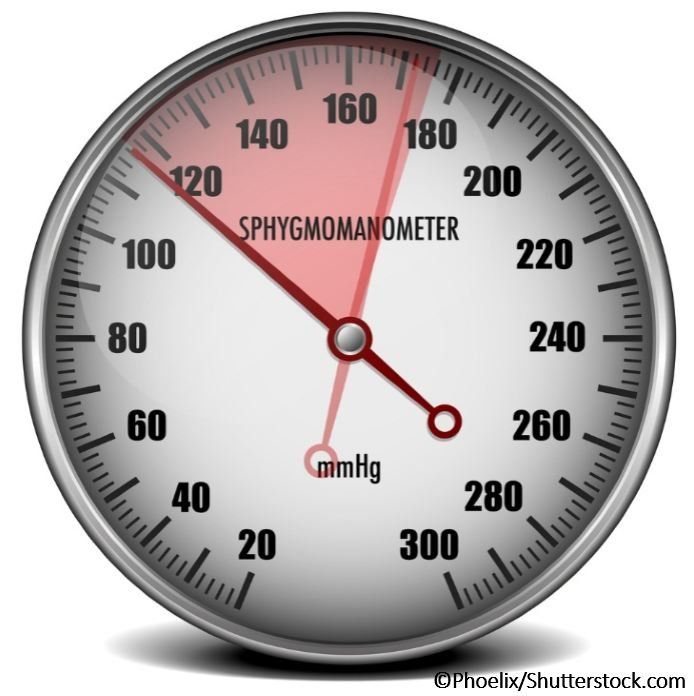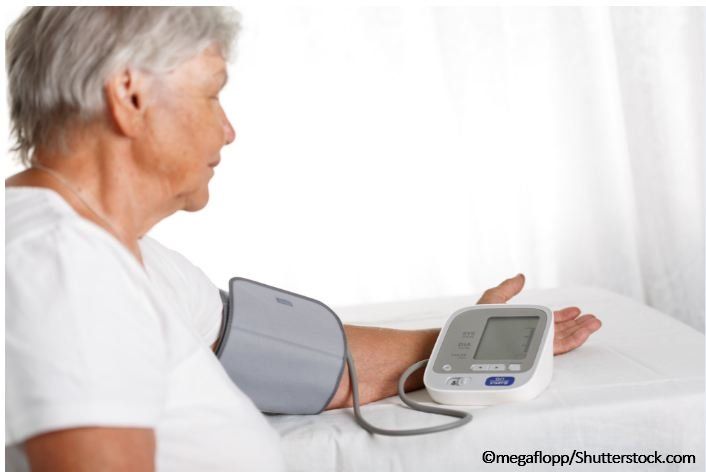Article
Managing Hypertension in CKD, Diabetes, and Heart Disease: It takes a Village
Drugs that improve blood pressure may have negative effects on a wide range of common comorbidities.

Phoelix/Shutterstock.comIt won’t be news to any practicing clinician that the expanding demographic of Americans with hypertension is not homogenous. Yes, there are those patients whose hypertension is their sole malady that requires medication and their treatment is typically straightforward. They are the minority, however, as the majority of adults with hypertension have at least one and often several comorbidities that may be affected by choice of antihypertensive agent. For example, patients with chronic kidney disease (CKD) have hypertension which can be complicated by hyperkalemia that is induced by angiotensin converting enzyme inhibitors (ACEIs), angiotensin receptor blockers (ARBs), and/or spironolactone (S). Persons with diabetes mellitus (DM) frequently have comorbid hypertension. The problem there? Metoprolol increases insulin resistance making it a questionable choice in this population. Since heart failure warrants beta blockade and ACEI, ARB, or S agents, are some prescriptions better choices for heart failure patients with comorbid hypertension? It challenges the “medical village” – PCPs, cardiologists, endocrinologists, nephrologists- to implement regimens for elevated blood pressure (BP) that address potential collateral effects on comorbidities.
A few questions will test what you know.
1. Which of the following statements regarding BP management and target BP in patients with CKD is/are correct (select all that apply)?
A. In CKD patients with proteinuria (both with/without DM), targeting blood pressures to <125-130/75-80 mm Hg has led to slower decline in glomerular filtration rate (GFR), but not to reduced mortality or improved cardiovascular outcomes.
B. The Modification of Diet in Renal Disease Study (MDRD, with an approximate 19-year follow up), demonstrated that a lower blood pressure target (ie, 125/75 mm Hg) resulted in a 28% lower risk of death after ESRD-dialysis was initiated.
C. The side effects and complications of ACEI/ARB drugs (such as hyperkalemia) in patients with CKD preclude use of these drugs for hypertension control in this population.
D. When metoprolol was compared to carvedilol in patients with DM and hypertension, metoprolol decreased insulin sensitivity, increased A1c values, and led to more patients developing microalbuminuria.
NEXT: Answer, discussion, question #2.

Correct Answers: A, B, and D.
The Irbesartan in Diabetic Nephropathy Trial and the African American Study of Kidney Disease demonstrated that GFR declines in proteinuric patients with DM were improved with lower blood pressure targets.1,2,3
The MDRD study revealed that a lower blood pressure target resulted in a lower risk of death accompanied by less heart failure and coronary disease complications.1,4
ACEIs and ARBs are good for CKD patients, not bad. In 224 patients with CKD (average eGFR of 26 mL/min per 1.73 m2), benazepril versus placebo favored benazepril with a 19% reduction in risk of the primary composite endpoint-ESRD, a doubling of creatinine, or death.1,5 Hyperkalemia was not a problem in the benazepril group.
Yes, metoprolol fared poorly versus carvedilol in regard to all the negative markers listed in option D, including insulin resistance and A1C values.1,6
The team approach to treating hypertension in CKD involves cardiologists since ischemic disease and systolic dysfunction are not uncommon in this population. In fact, the same holds true for all persons with hypertension. Therefore, beta blockade and afterload reduction are essential components of any therapeutic regimen. There are a lot of beta blockers to choose from. Are there “better” or worse combinations for your patients who have systolic dysfunction, CKD, DM, hypertension, and/or ischemic heart disease? Let’s try another question.
2. Which of the following statement(s) is/are accurate?
A. In one study, despite a reduction in systolic and diastolic blood pressures of 10 and 7 mm Hg respectively, atenolol as an antihypertensive agent did not reduce the incidence of coronary disease or cardiovascular events including death on 5.8-year follow up.7,8
B. Labetalol and carvedilol have significant antihypertensive effects with average systolic and diastolic blood pressure reductions of 15-20 mm Hg systolic and 1-12 mm Hg diastolic, respectively.9
C. In the context of systolic dysfunction, carvedilol is inferior vs atenolol and metoprolol in reducing all-cause mortality.7
D. When carvedilol was compared to atenolol, metoprolol, bucindolol, bisoprolol, and nebivolol in the context of heart failure, carvedilol achieved the best reduction in mortality (6.6%) and had the best patient tolerability.
NEXT: Answer, discussion, question #3.

Correct answers: A and D
Data from 8 studies in which labetalol and carvedilol were utilized to treat hypertension (n=1493) demonstrated BP lowering efficacy of only 4/3 mm Hg for carvedilol and 10/7 mm Hg for labetalol.9 Carvedilol was superior to atenolol and metoprolol in reducing all-cause mortality individuals treated for heart failure.7,10
3. Finally, when confronted with hyperkalemia while titrating renin-angiotensin-aldosterone blockers (ACEI, ARB, S) to reduce afterload or hypertension, which of the following would you do?
A. When the serum potassium (K+) level exceeds 5.5 meq/L, lower the dose of the ACEI, ARB, spironolactone.
B. Use the potassium binding resin kayexelate simultaneously with the medication that is raising the K+ level.
C. Utilize a newer K+ binding agent-patiromer--and continue to titrate the agents for blood pressure and afterload reduction.
D. Use other medications that don’t affect K+ like hydralazine in lieu of ACEIs, ARBs, or spironolactone.
NEXT: Answer, discussion.
Correct answer: C
There is overwhelming evidence that the renin-angiotensin-aldosterone blockers are life savers. in a number of illnesses affecting the heart (systolic dysfunction, for example) and kidney (proteinuric diabetic renal disease). These agents are also beneficial in CKD and hypertension with or without comorbidities (such as heart failure). One complication standing in the way of their use in some of the aforementioned pathologies is the development of hyperkalemia. Two recent studies with cohorts consistent with the groups we have been discussing give important direction.11,12 Use a K+ binding agent that is safer than kayexelate and that does not cause diarrhea-patiromer-allows titration of lifesaving medications that can cause life-threatening elevations in serum K+.
References
1. Valika A, Peixoto AJ. Hypertension management in transition: from CKD to ESRD. Adv Chronic Kid Dis. 2016; 23:255-261.
2. Berl T, Hunsicker LG, Lewis JB, et al. Impact of achieved blood pressure on cardiovascular outcomes in the Irbesartan Diabetic Nephropathy Trial. J Am Soc Nephrol. 2005; 16:2170-2179.
3. Sarnak MJ, Greene T, Wang X, et al. The effect of a lower target blood pressure on the progression of kidney disease: long term follow-up of the Modification of Diet in Renal Disease Study. Ann Intern Med. 2005; 142:342-351.
4. Ku E, Glidden DV, Johansen KL, et al. Association between strict blood pressure control during chronic kidney disease and lower mortality after onset of end-stage renal disease. Kid Int. 2015; 87:1055-1060.
5. Hou FF, Zhang X, Zhang GH, et al. Efficacy and safety of benazepril for advanced chronic renal insufficiency. N Engl J Med. 2006; 354:131-140.
6. Bakris GL, Fonseca V, Katholi RE, et al. Metabolic effects of carvedilol vs. metoprolol in patients with type 2 diabetes mellitus and underlying hypertension: a randomized controlled trial. JAMA 2004; 292:2227-2236.
7. Dinicolantonio JJ, Fares H, Niazi AK, et al. B-blockers in hypertension, diabetes, heart failure, and acute myocardial infarction: a review of the literature. Open Heart 2015; 2:e000230.
8. Medical Research Council Working Party. Medical Research Council Trial of treatment of hypertension in older adults: principal results. BMJ. 1992; 204:405-412.
9. Wong GW, Laugerotte A, Wright JM. Blood pressure lowering efficacy of dual alpha and beta blockers for primary hypertension. Cochrane Database Syst Rev. 2015; 8:doi: 10.1002/14651858.
10. DiNicolantonio JJ, Lavie CJ, Fares H, et al. Meta-analysis of carvedilol versus beta-selective beta-blockers (atenolol, bisoprolol, metoprolol, and nebivolol). Am J Cardiol. 2013; 111:765-9.
11. Weir MR, Bakris GL, Bushinsky DA, et al. Patiromer in patients with kidney disease and hyperkalemia receiving RAAS inhibitors. N Engl J Med. 2015; 373:211-221.
12. Bakris GL, Pitt B, Weir MR, et al. Effect of patiromer on serum potassium level in patients with hyperkalemia and diabetic kidney disease: The AMETHYST-DN Randomized Clinical Trial. JAMA. 2015; 314:151-161.





